Part 2 -Achieving Effective Talk – maximising the learning opportunities with the Talk Partner strategy.
Part 1 of the ‘Time To Talk!‘ post described how and why we have implemented the Talk Partner strategy in our class. The natural follow on from this was a discussion with the pupils about what makes a good talk partner.
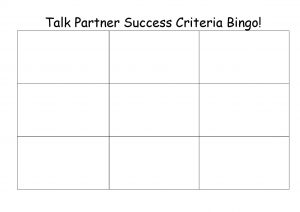
What we did:
We co-constructed the success criteria for Talk Partners in class, using the blank bingo card method (as described in the post “I wish these children had been my Maths teacher!“)
The children and I thought about what does not make a good talk partner and the subsequent discussion drew out ingredients for being a good talk partner. The pupils filled their cards in with their thoughts about what being a good Talk Partner involved……. 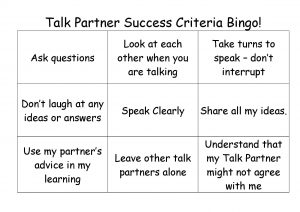
……and we played Bingo against a collation I made of our ideas.
I created a class Success Criteria poster for us to have up on the wall as a reminder for us to refer to throughout all our lessons.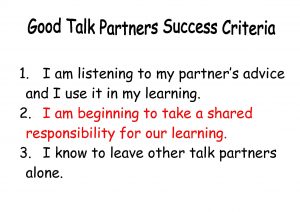
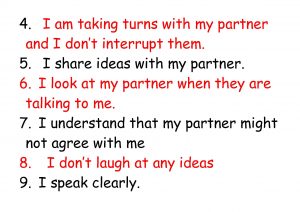
The final step in the process, to really embed the Effective Talk criteria, has been to have short self- and peer evaluation sessions before changing Talk Partners each week.
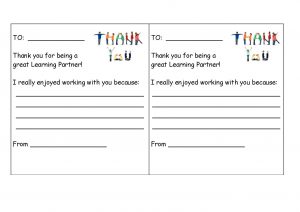
The children have really enjoyed reflecting on their part in the partnership and writing a positive comment on a “Thank You” slip, which they then give to their partner, saying why they enjoyed learning with them. The children love receiving them and keep these complimentary slips in a special book, which they (and I) can look at over time.
Outcomes:
Achieving all the success criteria will need training, and I intend to look at each one in more depth over time, creating tasks that will specifically target areas that require it. The immediate impact I have seen is:-
- that children are aware of the importance of looking at each other when speaking;
- they are beginning to take a shared responsibility for each others’ learning, ensuring that together, they both complete tasks set, helping each other along the way;
- the amount of pupil speaking and listening has increased dramatically;
- and my talk has decreased, allowing me to listen in to their conversations and gain immediate formative feedback, and give immediate feedback, clearing up misconceptions as they arise.
I look forward to watching this develop over time and believe it will help me to have a clearer focus for assessment in lessons.
